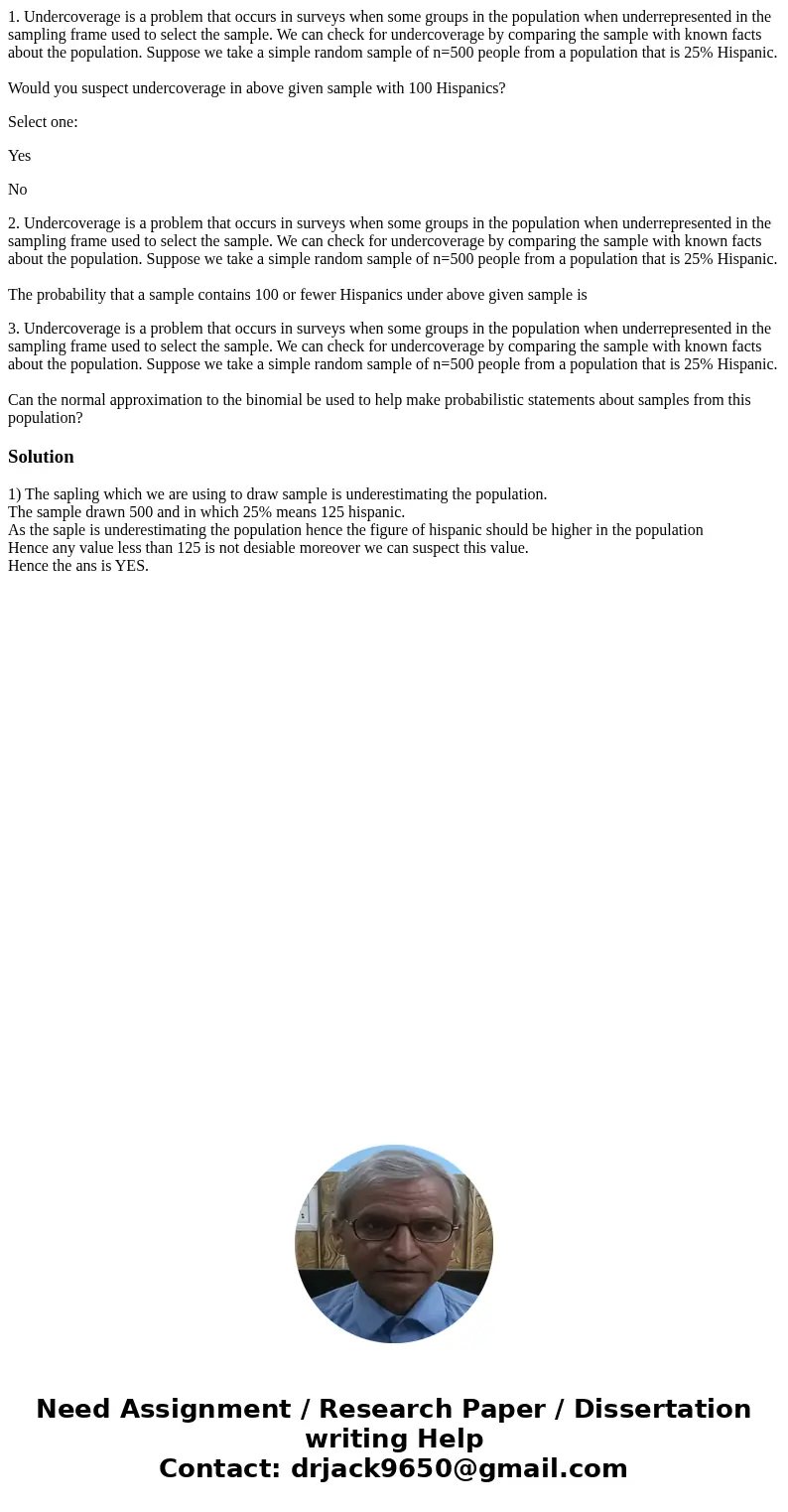1 Undercoverage is a problem that occurs in surveys when som
1. Undercoverage is a problem that occurs in surveys when some groups in the population when underrepresented in the sampling frame used to select the sample. We can check for undercoverage by comparing the sample with known facts about the population. Suppose we take a simple random sample of n=500 people from a population that is 25% Hispanic.
Would you suspect undercoverage in above given sample with 100 Hispanics?
Select one:
Yes
No
2. Undercoverage is a problem that occurs in surveys when some groups in the population when underrepresented in the sampling frame used to select the sample. We can check for undercoverage by comparing the sample with known facts about the population. Suppose we take a simple random sample of n=500 people from a population that is 25% Hispanic.
The probability that a sample contains 100 or fewer Hispanics under above given sample is
3. Undercoverage is a problem that occurs in surveys when some groups in the population when underrepresented in the sampling frame used to select the sample. We can check for undercoverage by comparing the sample with known facts about the population. Suppose we take a simple random sample of n=500 people from a population that is 25% Hispanic.
Can the normal approximation to the binomial be used to help make probabilistic statements about samples from this population?
Solution
1) The sapling which we are using to draw sample is underestimating the population.
The sample drawn 500 and in which 25% means 125 hispanic.
As the saple is underestimating the population hence the figure of hispanic should be higher in the population
Hence any value less than 125 is not desiable moreover we can suspect this value.
Hence the ans is YES.

 Homework Sourse
Homework Sourse